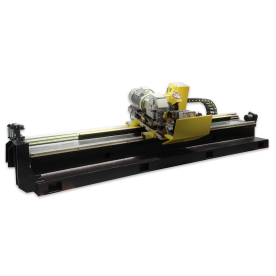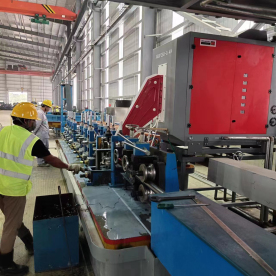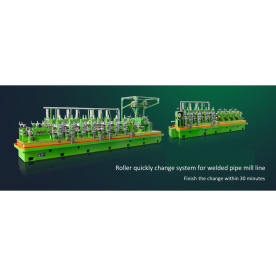[High-Speed Flying Saw Machine]Revolutionizing Industrial Cutting: The Advantages and Applications of High-Speed Flying Saw Machines in Modern Manufacturing
News 2024-7-31
****In the world of manufacturing, precision and efficiency are key factors that determine productivity and the overall success of a business. As industries evolve with technological advancements, it becomes increasingly crucial to have machinery that can keep up with the demands of high-speed production. One of the most innovative solutions to emerge in recent years is the High-Speed Flying Saw Machine, a cutting-edge technology that is transforming how materials are processed in a variety of sectors. This article delves into the functionality, benefits, and applications of High-Speed Flying Saw Machines, highlighting their significant role in modern manufacturing environments.

Revolutionizing Industrial Cutting: The Advantages and Applications of High-Speed Flying Saw Machines in Modern Manufacturing
High-Speed Flying Saw Machines are specialized tools designed to cut materials with incredible speed and precision. Unlike traditional saws that operate in a stationary mode, flying saw machines utilize a system in which the saw blade moves at high velocity. The key component of this technology is its ability to cut while the material is in motion, a process that dramatically enhances efficiency and streamlines production lines.
These machines are usually equipped with advanced features such as servo drives and programmable logic controllers (PLCs), allowing for real-time adjustments and optimized cutting operations. The integration of these technologies ensures that the saw can maintain high RPMs (revolutions per minute) while delivering consistent performance, regardless of the type of material being processed.
The Benefits of High-Speed Flying Saw Machines

Revolutionizing Industrial Cutting: The Advantages and Applications of High-Speed Flying Saw Machines in Modern Manufacturing
2. **Precision Cutting**: The precision offered by flying saw machines is unparalleled. They are engineered to perform highly accurate cuts, often eliminating the need for secondary processing. This level of accuracy not only ensures high-quality products but also fosters customer satisfaction and reduces material waste.
3. **Versatility**: High-Speed Flying Saw Machines can handle a wide variety of materials, including metals, plastics, composites, and more. This versatility makes them suitable for various industries such as automotive, construction, and aerospace, where specific cutting needs can fluctuate.
4. **Reduced Labor Costs**: With the automation capabilities of High-Speed Flying Saw Machines, there is often less reliance on manual labor for cutting processes. These machines can operate with minimal supervision, enabling businesses to allocate human resources to other critical areas. This shift not only lowers labor costs but also enhances worker safety.
5. **Lower Material Waste**: The advanced cutting technology minimizes kerf (the width of the cut) and generates less scrap material. This is particularly important for businesses looking to maximize their material yields while also being environmentally conscious.
Applications Across Industries
High-Speed Flying Saw Machines have found applications across a broad range of industries.
- **Automotive**: In the automotive sector, these machines are utilized to cut various components, from frame parts to intricate interiors. Their speed and precision enhance the manufacturing of critical components, ensuring quicker assembly and improved vehicle safety.

Revolutionizing Industrial Cutting: The Advantages and Applications of High-Speed Flying Saw Machines in Modern Manufacturing
- **Aerospace**: The aerospace industry demands extreme precision, and High-Speed Flying Saw Machines meet these requirements. They are used to cut aircraft materials, including aluminum and composites, adhering to strict safety and performance standards.
- **Metal Fabrication**: Metal fabricators use flying saws for cutting large sheets or rods of metal with efficiency and accuracy, leading to rapid processing times and reduced labor costs.
Conclusion
The introduction of High-Speed Flying Saw Machines into the manufacturing landscape represents a significant leap forward in cutting technology. Their ability to combine precision, efficiency, and versatility makes them an invaluable asset for industries looking to maximize productivity and reduce operational costs. As manufacturing continues to evolve, embracing innovations like flying saw machines is essential for staying ahead in a competitive market. For manufacturers willing to invest in this technology, the long-term benefits far outweigh the initial costs, promising a more efficient and profitable future.
